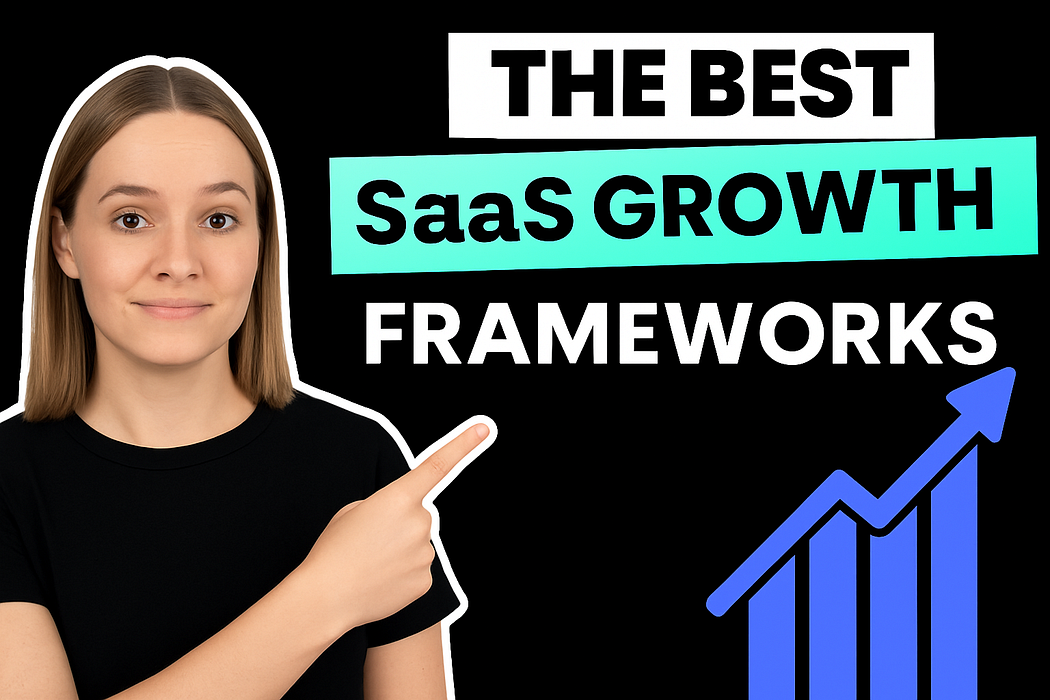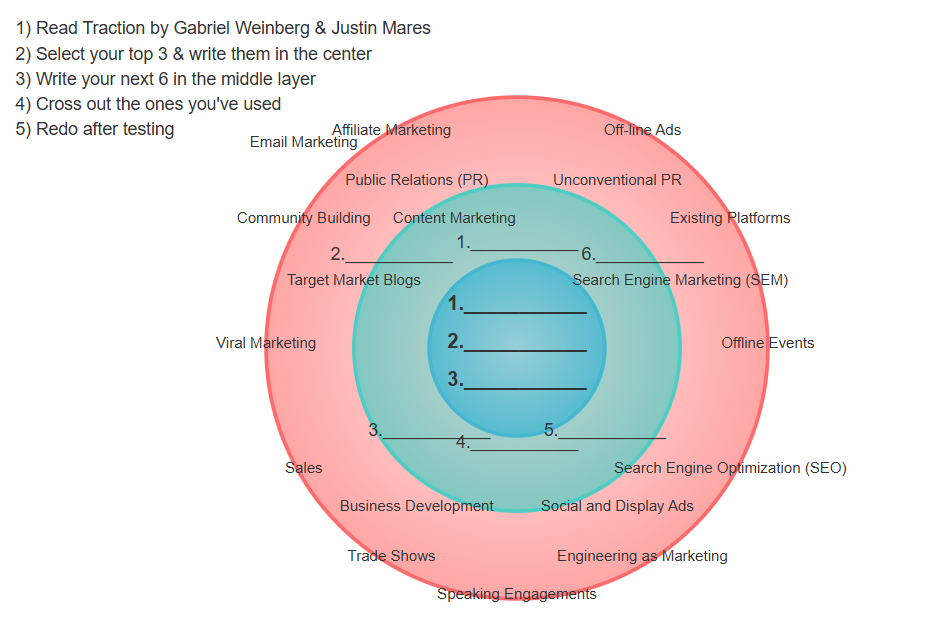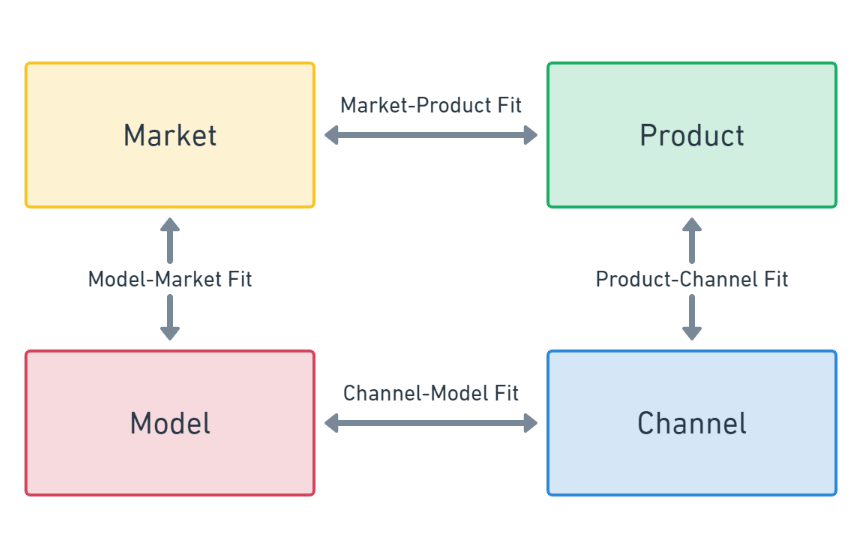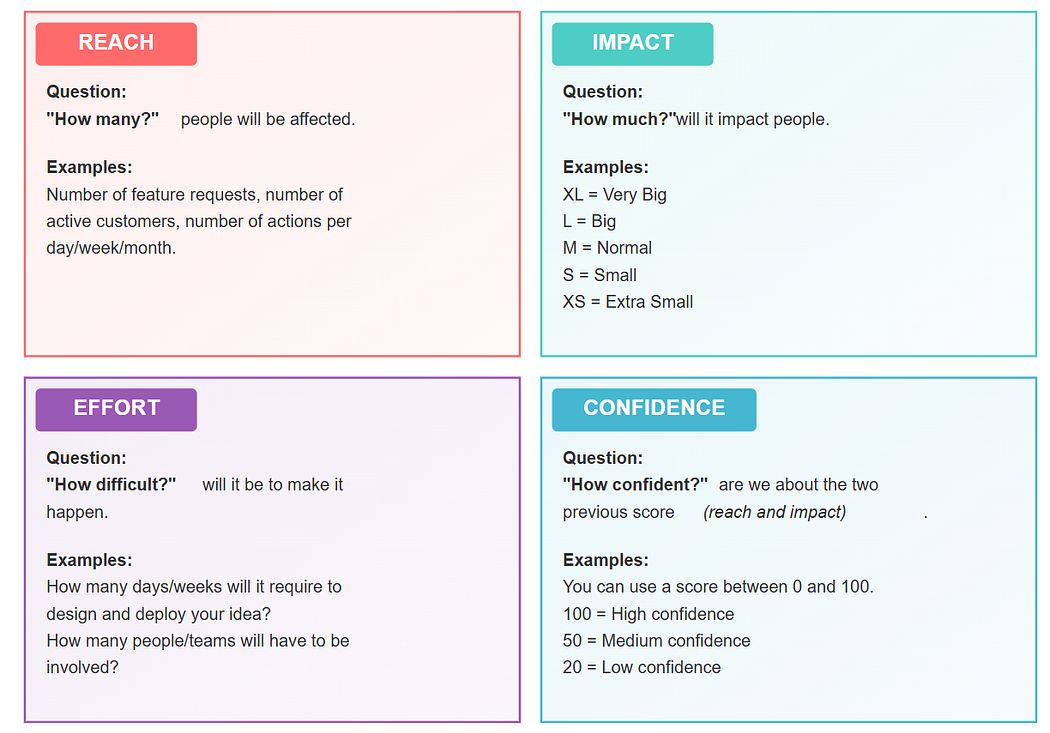Sonu Goswami (SaaS content writer) SaaS Growth Frameworks: A Founder’s Guide to Scaling Success
Discover the SaaS growth frameworks that help startups scale quickly and sustainably. Learn about funnels vs loops, prioritization models (AAARRR, RICE, Bullseye, Four Fits, North Star), and real-world SaaS scenarios to put these strategies into action.

Growing a SaaS business isn’t magic — it’s a science guided by proven frameworks. As a founder, using structured growth models can turn guesswork into a repeatable process. In this article, we’ll demystify popular SaaS growth frameworks — from classic pirate funnels to modern growth loops — and show how they apply in real startup scenarios. You’ll learn how to pick the right framework for your stage, measure what matters, and align your team for sustainable expansion. Let’s dive in.
Key Takeaways:
- Frameworks vs. tactics: Growth frameworks (funnels, loops, prioritization matrices) give your team a shared map for scaling a SaaS business, avoiding ad-hoc or siloed efforts.
- Funnel vs. loop: Traditional funnel (AARRR) models vs. compounding growth loops — each has pros and cons. Modern SaaS players increasingly favor loops (Dropbox, Slack, Venmo) to achieve sustained, viral growth.
- Top frameworks: Key models include the AAARRR funnel (Acquisition, Activation, Adoption, Retention, Revenue, Referral), the Growth Loop model, the Bullseye (Traction) channel framework, Four Fits for product/market alignment, and prioritization tools like RICE/ICE and North Star metrics.
- Real SaaS examples: We’ll walk through scenarios (e.g. a project-collab SaaS and an analytics platform) showing how these frameworks guide strategy.
- Next steps: Start by mapping one of these frameworks to your own startup, and iterate based on data. (Scroll to FAQs below for quick answers on common questions.)
Why Frameworks Matter for SaaS Growth
In the chaotic early days, many SaaS founders rely on gut instincts or a hodgepodge of tactics. This often leads to scattered efforts and disappointing results. A growth framework is a structured mental model that aligns your strategy around the customer journey and business goals. It ensures everyone focuses on the same priorities — acquisition channels, product usage, or monetization levers — instead of reinventing the wheel.
Think of frameworks as scalable processes: they compress big ideas into memorable visuals or steps, helping you avoid rookie mistakes and align your cross-functional team. As one growth expert puts it, a growth framework “allows you to hone in on the marketing channels that will yield success for your business in the long-term”. By adopting a repeatable framework, you convert trial-and-error into a predictable formula for expansion.
For example, trying random campaigns without a framework often means burning money on ads or hacks that might not fit your product. In contrast, a framework forces you to test a hypothesis (e.g. “Our users will love referral bonuses”) in a systematic way. This clarity is especially valuable as you scale a SaaS startup, where every dollar and engineering hour matters. Rather than a scattergun approach, using growth frameworks keeps your team aligned on key metrics and sustainable growth paths.
Funnels vs. Loops: The Evolution of Growth Models
For years, the standard picture of growth was a one-way funnel. Startups mapped out a linear customer journey: Acquisition → Activation → Retention → Referral → Revenue. This was popularized by Dave McClure’s Pirate Metrics (AARRR) framework. It made sense: drive traffic, convert signups, retain customers, encourage referrals, and monetize. This helped early-stage companies break down their funnel and spot leaks.
However, funnels have limitations. They assume you must constantly feed new users into the top, which can be expensive and silo teams. As one source notes, traditional funnels “are one-directional” and “hungry and expensive” — you always need new ads or promotions to keep feeding the growth machine. Funnels also tend to create departmental silos: marketing is judged by top-of-funnel signups, product by retention, etc. This can incentivize quantity over quality, hurting overall growth.
Enter Growth Loops — the modern alternative. A growth loop is a closed system where each customer action naturally generates the next. In a loop, outputs become new inputs, creating compounding growth. For example, when a new user signs up and refers a friend (output), that friend joins and refers someone else, and so on. The cycle repeats without needing an external push.
Defining a growth loop: “A new customer signs up… then shares or refers a friend (this is the output), and the cycle repeats,” making each loop self-sustaining.
Growth loops have proven massively effective for product-led companies. Dropbox’s early success, for instance, was built on a viral referral loop (free storage for each referral). Similarly, payment app Venmo’s breakout came from each transaction inviting friends into the network. In fact, many experts agree that “growth loops have become the dominating framework for SaaS companies”, marking a paradigm shift beyond the funnel model. By reinvesting the output of one cycle into the next, loops generate sustainable, compounding growth — just as a snowball gains size rolling downhill.
Funnels and Pirate Metrics (AARRR/AAARRR)
While loops are hot, funnels haven’t disappeared. The classic AARRR funnel is still a useful diagnostic tool, especially early on. Many SaaS teams expand it into AAARRR to include extra steps relevant to modern product usage. A popular variation is Acquisition, Activation, Adoption, Retention, Revenue, Referral. This ensures you not only bring users in, but also activate them (reach their “aha!” moment) and get them adopting features before expecting a referral or upsell.
Pirate Funnel (AAARRR) checklist: Acquire, Activate, (Adopt), Retain, Revenue, Refer.

Using this funnel, you can assign KPIs and owners to each stage. For example:
- Acquisition: number of trials or leads (marketing’s focus).
- Activation: % of signups hitting key milestones (product team).
- Adoption/Retention: active users or renewal rates (product/customer success).
- Revenue: average revenue per account or expansion (sales).
- Referral: new signups coming from word-of-mouth (everyone).
This helps answer questions like “Are we getting users? Are they sticking? Why aren’t they converting?” By tracking each stage, you can run targeted experiments (e.g. onboarding tweaks, pricing tests) to improve conversion.
However, remember the funnel’s limitations: it often ignores compounding effects. If all you do is top-up the funnel with paid ads, growth will cap once ad budgets max out. Loops alleviate this by making each retained customer a potential growth engine.
Growth Loops and Virality
Growth loops deserve a section of their own because they embody modern growth magic. In essence, a growth loop is any cycle where a customer action begets another user or action. They come in many flavors:

- Viral loop: Users invite or refer others (e.g. Slack team invites a colleague; Venmo payment invites a friend).
- User-generated content (UGC) loop: Users create content that attracts others (e.g. Pinterest pins drawing new users).
- Paid loop: Revenue from existing users is reinvested to acquire more (e.g. subscription fees funding ads to get new signups).
Each loop is unique to the product. For example, a document-signing SaaS could implement a viral loop: when User A uploads a contract and sends it to User B, that email prompts User B to try the product — turning a one-off transfer into a referral pipeline. In contrast, Pinterest’s growth came from its UGC loop: each user adds pins (content) that surface in search engines or on others’ feeds, driving organic signups.
What makes loops so powerful is the compounding effect. As the Ortto growth team notes, loops “provide sustainable, compounding growth” and “unite teams to work towards common goals”. Because the growth comes from within the product, not just outside ads, cost of acquisition tends to drop over time. The loop model also forces cross-functional collaboration: product, marketing, and customer success all play a role in nurturing the cycle, breaking down silos.
Real Example: Venmo’s Payment Loop
To bring this to life, consider Venmo. When one user sends money to a friend via Venmo, that friend gets an invitation to sign up (often to collect the funds). Once they join, they in turn pay other friends, and so on. Each payment is an output that feeds the loop. As Ortto explains, this “viral loop” saw one user signing up and making payments, which directly led new users to join — and those users quickly recruited yet more — igniting explosive growth.
When to Use Loops vs Funnels
- Early-stage / unproven product: Funnels (AARRR) help you identify if basic acquisition and activation are working.
- Product-led / viral potential: If referrals or content-sharing are natural, invest in loops early. Social networks, marketplaces, and productivity tools often have inherent loops.
- Mature or expensive funnel: When CAC is high, loops can break the cost ceiling by making each user a growth channel.
In reality, you often blend both. Use the funnel framework to diagnose leakages, and use loops as experiments to accelerate growth.
Key SaaS Growth Frameworks to Scale Your Startup
Beyond funnels and loops, SaaS founders leverage several conceptual frameworks to structure strategy. These frameworks guide decisions from hiring to go-to-market, and they’re worth learning in your toolbox. Below are some top models to consider:
1. Pirate Metrics (AARRR) and Extended Funnel
As covered above, AARRR (Acquisition, Activation, Retention, Referral, Revenue) or its expanded form AAARRR is the classic growth funnel framework. It’s one of the first frameworks many founders learn. Use it to map and measure each stage of your customer lifecycle. It helps ensure you’re not optimizing one stage (e.g. signup rate) at the expense of another (e.g. retention).
Tip: Define clear metrics for each letter. For example, Activation might be “user completes 3 key actions”, and Retention could be “user logs in at least once in 30 days”. Track these in your analytics dashboard to spot where users drop off.
2. Growth Loops (Viral, UGC, Engagement Loops)
Growth loops have already been introduced above. To recap, loops are any feedback cycles that convert output back into input. They are less a step-by-step playbook and more a mindset: look for natural viral or referral levers in your product, and then systematize them.
- Viral loops: built on user-to-user invites. E.g., social apps, payment apps (Venmo), or collaboration tools (Zoom sending invite links).
- Content loops: user content attracts new traffic. E.g., blogs, videos, templates, or code repositories where sharing drives signups.
- Retention/engagement loops: deepening usage creates value. E.g., algorithmic recommendations (Netflix or TikTok content loops where one user’s activity leads to better recommendations for others, keeping everyone engaged).
When planning loops, always ask: What does a satisfied user produce, and can we turn that into a driver for new users? The output must be something naturally shareable or promotable.
3. Bullseye (Traction) Framework
The Bullseye Framework (from Traction by Gabriel Weinberg) helps you systematically find the right marketing channels. Imagine three concentric circles: the outer ring has all 19+ possible channels (SEO, content, PR, ads, events, etc.), the middle ring is channels you think could work, and the center (the bullseye) is the one channel that actually moves the needle.

“The Bullseye Framework is a tool that allows you to hone in on the marketing channels that will yield success for your business in the long-term”.
How to use it: Brainstorm all potential traction channels, shortlist 3–5 most promising, then run quick tests (small ads, trial campaigns, partnerships). Measure which channel gives the best ROI. Whichever channel performs best becomes your main strategy (placed at the bullseye), while others play supporting roles.
For example, a content analytics startup (think “Contentlyze”) might identify content marketing, SEO, and LinkedIn ads as top contenders. They could run week-long tests: publish 3 blog posts, boost LinkedIn ads, and gauge web traffic and signups. If content drives signups at the lowest cost, that channel goes to the bullseye. This focused approach stops teams from chasing every shiny new tactic, letting you double down on the one or two channels that truly work.
4. Four Fits (Brian Balfour’s Model)
Once product-market fit is achieved, the next challenge is scaling. Brian Balfour (and the Reforge team) propose that growth to $100M+ requires four intersecting “fits”:

- Product-Channel Fit: Are your acquisition channels effective given your product? (E.g. does Google Ads work for an enterprise SaaS or is it too broad?)
- Channel-Model Fit: Does your go-to-market model match your channels? (E.g. freemium models thrive on viral channels, whereas enterprise sales fit direct outreach.)
- Model-Market Fit: Does your pricing/model fit the market’s willingness to pay?
- Market-Product Fit (reverse PMF): Even after PMF, ensure the market matches your product’s value.
In simple terms, Balfour warns that product-market fit alone isn’t enough. A big, scaling SaaS also needs to nail the distribution model and the unit economics. If you have product-market fit but your customer acquisition cost (CAC) is sky-high, you lack Channel-Model Fit. If you have happy users but a subscription price too low to sustain growth, you lack Model-Market Fit.
“Without a [channel-model] component, in particular, you are dead in the water” when trying to scale.
Use this framework as a diagnostic: if growth plateaus, analyze which “fit” is missing. It could mean exploring new channels, changing pricing tiers, or even adjusting your product’s core message.
5. RICE/ICE Prioritization
Growth isn’t just about user acquisition; it’s also about deciding what initiatives to focus on. That’s where prioritization frameworks like RICE (Reach, Impact, Confidence, Effort) and ICE (Impact, Confidence, Ease) come in. These models help product and growth teams systematically score feature ideas or experiments.

- Reach: How many people will this move?
- Impact: How much will it move the needle for those people?
- Confidence: How sure are we about these estimates?
- Effort: How much work (and time) will this take?
By scoring each idea (e.g. on 1–10 scales) and calculating a RICE score, teams prioritize high-impact, low-effort opportunities first. For example, if adding a referral widget could reach 50,000 users with high impact on growth and moderate effort, it might outrank a small UI tweak that reaches fewer users.
Having a clear prioritization process prevents the dreaded “shiny object syndrome” and ensures your team tackles what actually moves metrics. Over time, refine your scoring with data: did the high-RICE projects actually pay off? Adjust assumptions accordingly.
6. North Star Metric
All the frameworks above hinge on a common question: What should we measure to know we’re on the right path? Enter the North Star metric — a single, crucial metric that captures the core value your product delivers. Unlike vanity metrics (e.g. total signups), the North Star is closely tied to revenue and user value.
For example:
- A project management tool might choose “tasks completed” as a North Star, reflecting real team productivity.
- A communication platform might use “messages sent” or “weekly active users”, indicating engagement.
- A content platform could use “time spent or content consumed”, aligning with stickiness.
The key is that the North Star should align the whole company. As Wudpecker’s guide notes, it’s a metric that “cuts through the noise” and ensures every team (engineering, marketing, CS) is pushing in the same direction. Once chosen, rally around it: put it on dashboards, mention it in meetings, and tie goals/KPIs to it. If you’re growing your North Star metric over time, odds are your business is healthy.
7. Jobs-to-be-Done (JTBD) and Lean Startup
Beyond quantitative models, qualitative frameworks are also useful. The Jobs-to-be-Done (JTBD) theory reminds us to focus on the customer’s underlying job, not just the product features. In growth terms, if you satisfy the core “job” (e.g., “manage team tasks easily”), users stick around longer. Always articulate your product’s JTBD clearly, then measure how well features solve it. (There are many JTBD guides; see [Userpilot’s template][0] or others).
Lean Startup’s Build-Measure-Learn loop is another timeless model. It means running rapid experiments (features, campaigns) to test hypotheses, measuring the results, and iterating. Growth hacking is not about one-off tricks; it’s about continuous validated learning. Always tie an experiment to a business hypothesis, measure impact on your funnel or North Star, then double down or pivot.
💡 Real SaaS Examples: Frameworks in Action
1. Dropbox — Scaling with a Viral Growth Loop
Dropbox is a classic case of using growth loops to achieve rapid, cost-effective scale. In the early days, they struggled with expensive paid acquisition and needed a more scalable engine.
Frameworks Used:
- Growth Loops: Dropbox introduced a referral program where users received free storage for inviting friends. This became a viral loop — each new user invited more users, compounding growth with minimal cost.
- AARRR Funnel: They tracked Acquisition → Activation → Referral → Retention metrics to identify and optimize key drop-off points.
- North Star Metric: “Files backed up per user” helped focus the team on actual usage, not vanity signups.
- Bullseye Framework: After testing multiple acquisition channels (ads, PR, SEO), referrals proved most effective — and became their “bullseye.”
Results: Dropbox grew from 100K to 4M users in just 15 months, mostly through this self-reinforcing viral loop — with very little ad spend.
2. Notion — Compounding Organic Growth via UGC Loops
Notion, the all-in-one workspace, leveraged user-generated content and strong community participation to scale from niche to mainstream without relying heavily on paid acquisition.
Frameworks Used:
- Content Loop: Users began creating and sharing Notion templates — from productivity dashboards to habit trackers. These public pages ranked on Google and circulated on social media, bringing in new users. Each new user had the potential to create more content, reinforcing the loop.
- RICE Prioritization: The product team used prioritization frameworks to decide which features (e.g. Notion API, integrations, mobile experience) to build next based on reach and impact.
- North Star Metric: Notion focused on “Weekly Active Documents” — ensuring users weren’t just signing up but actually using and sharing the product.
- Bullseye Framework: They experimented with content marketing, influencer tutorials, and community engagement before finding UGC + SEO as the high-ROI channels to double down on.
Results: Without major ad campaigns, Notion attracted millions of users through community-driven growth and content loops — a sustainable, low-CAC s
Putting It All Together: Choosing and Testing Frameworks
No single framework is a silver bullet. The real art is knowing which tool to use when:
- Early Stage (Finding Product-Market Fit): Focus on simple funnels (AARRR) and qualitative feedback. Founders should personally lead growth (Founder-Led Growth) since they know the users best. Use lean experiments to test core features and demand.
- Product-Led Growth (Scaling): Emphasize loops and activation. Identify any viral or content loops and double down. Experiment across Bullseye channels to find low-CAC acquisition.
- Market Expansion: Use frameworks like Four Fits and Ansoff Matrix to plan new markets or segments. Ensure your go-to-market model fits the new audience.
- Prioritization & Metrics: Always tie ideas back to your North Star and score them (RICE/ICE). If an experiment doesn’t move the needle after a fair test, pivot quickly.
- Team Alignment: Use frameworks to foster alignment. For example, share the North Star metric across teams and review AARRR funnel metrics together in weekly meetings.
Remember, a framework is only as good as the execution it inspires. They provide a lens, not a map etched in stone. Constantly validate assumptions with data and be ready to adapt. And don’t fall into the trap of “framework of the month” — start with one or two models that fit your current challenge, master them, then layer in others as needed.
Next Steps and Call to Action
Growth frameworks are tools, not answers in themselves. As a founder, the next step is to apply one of these models to your own business. Map out your funnel or loop, choose a focus metric, and start running experiments. Use the Bullseye process to prioritize channels, or the RICE method to pick the next feature. Share your journey with your team to ensure everyone is aligned around the same goals.
If you found these frameworks useful, implement one today: perhaps draw your current funnel on a whiteboard or sketch a growth loop that fits your product. Commit to testing it for a month and see how it moves the needle.
Call to Action: Ready to get your SaaS growth engine humming? Pick one framework above and run a growth experiment this week. Document what you try, measure the results, and refine your strategy. Share these results with other founders or in our community (if applicable) to learn together.
Sticking with structured frameworks will pay off in more predictable, compounding growth for your startup.
Frequently Asked Questions (FAQ)
Q: Which growth framework helps SaaS companies grow fastest?
A: There’s no one-size-fits-all “fastest” framework, but modern SaaS success stories often rely on growth loops. Companies like Dropbox, Slack, and even Venmo grew explosively by using referral/viral loops and product-led growth. Loops create compounding growth when well-designed. However, a robust approach usually combines a funnel (AARRR) for structure with loops for virality. The best framework depends on your product: if you have high viral potential, prioritize loop design; otherwise focus first on optimizing the funnel and acquisition channels.
Q: What are common frameworks for scaling a SaaS startup?
A: Key frameworks include: the AAARRR funnel (covering Acquisition through Referral), growth loops for compounding growth, the Bullseye/Traction framework for channel selection, Four Fits for scaling product and business mode, and prioritization models like RICE/ICE. Additionally, defining a single North Star metric helps align teams around what to optimize (for instance, monthly active users or core usage).
Q: How do funnels differ from loops in SaaS growth?
A: Funnels (like AARRR) are linear and focus on pushing users through stages (awareness → signup → retention → referral). They require continuously adding new traffic (top-of-funnel) and often create departmental silos. Growth loops, by contrast, are circular: one user’s actions directly feed the next user’s journey. Loops “reinvent outputs as inputs” leading to self-sustaining, compounding growth. In practice, loops tend to be more cost-effective and harder for competitors to copy once they’re built into your product’s DNA.
Q: How can I implement a SaaS growth framework in my startup?
A: Start by mapping your current process (funnel or loop). For example, draw out your AAARRR funnel stages and see where most users drop off. Or imagine a loop: what key action by a user naturally leads others to join? Then pick one framework: if funnels are weak, optimize onboarding or sales flow; if loops exist, double down on referral incentives or content creation. Use data to measure success at each stage. For channel strategy, try the Bullseye method: list all potential channels, run tests, and focus on the winners. Always iterate: decide on an experiment, set a clear hypothesis tied to your North Star, and then learn from the outcome. Over time, these small, framework-driven experiments compound into big growth.
Q: Why is a North Star metric important?
A: A North Star metric is a single customer-centric metric that drives long-term growth. It cuts through vanity metrics and ensures the whole team focuses on the core value delivered (e.g. “nights booked” for Airbnb). By rallying around a North Star, every department (dev, marketing, sales) knows which user activity really matters. Tracking that metric consistently helps maintain a long-term vision and avoid getting distracted by short-term fluctuations.
Q: Where can I learn more about these frameworks?
A: This article cited several growth experts and resources. For deeper dives, you might explore blog posts by Reforge, growth experts (Balfour, Lenny Rachitsky, etc.), or practical guides on Pirate Metrics and North Star metrics. The references above (e.g. [Userpilot], [Ortto], [Wudpecker]) are good starting points to learn each framework in detail.
Scaling a SaaS startup is challenging, but with the right frameworks and disciplined experimentation, you can turn growth into a repeatable engine. Good luck on your journey!

